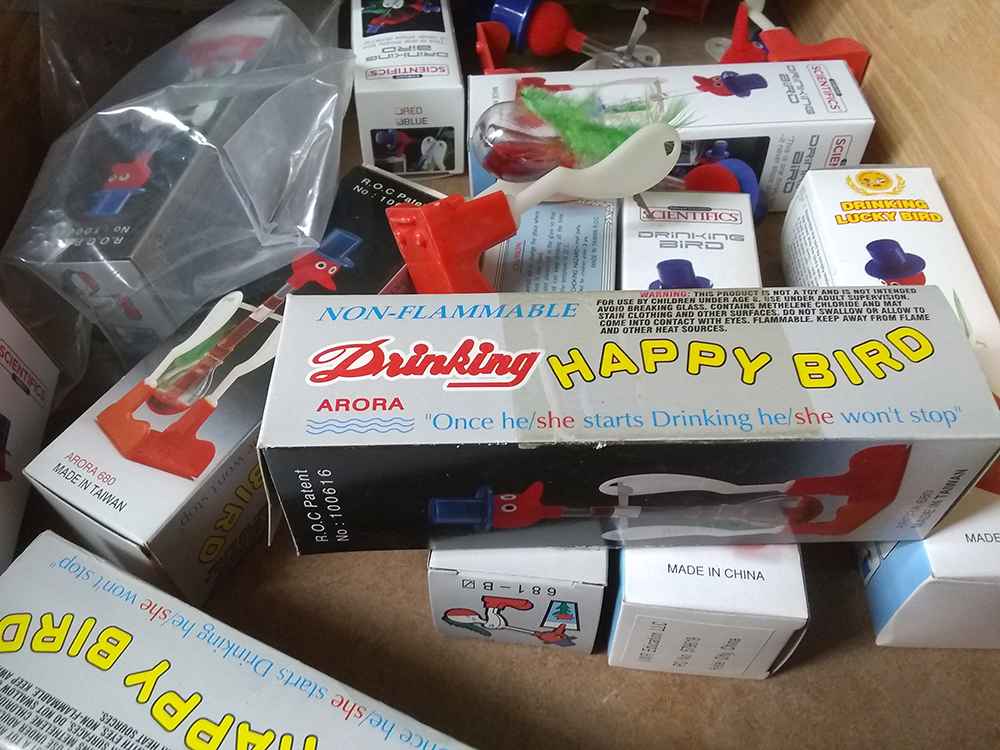
Greetings from one of the unofficial mascots of Physics, the drinking bird! Forever wearing its top hat, this classic toy is found all around the department. Though we keep a drawer full of them in storage, there are a handful about the shop shelves, professors’ offices, and occasionally elsewhere. The drinking bird is an example of a heat engine, which converts heat into mechanical energy.
Drinking birds are especially fun because they operate at room temperature. Two glass bulbs are connected by a tube and filled with methylene chloride, which has a low boiling point and condenses and vaporizes readily within the vessel. When the upright bird’s felt-covered head is wet, evaporative cooling causes a vapor pressure differential between the two ends. As liquid from the bottom rises, the bird becomes top-heavy and leans down for a drink, re-wetting the felt and priming the process to repeat. It’s an entertaining demonstration of the effects of various laws of physics.
There’s the ideal gas law, of course. Temperature change causes pressure change, which causes a shift in the balance of liquid and vapor. That shift in mass results in a center of mass that oscillates from one side to the other of the fulcrum, creating torque and movement. For as long as the bird can re-wet itself and maintain the temperature differential, the heat engine will continue to operate.
Alternately, you can apply a heat source to the lower bulb to get the same effect, which is the basis for most heat engines. There are many options to produce heat, and a wealth of engine designs to turn that thermal energy into useful work. But few are as simple, visually apparent, and entertaining as a bobbing glass toy.
One thought on “Drinking Bird”
Comments are closed.